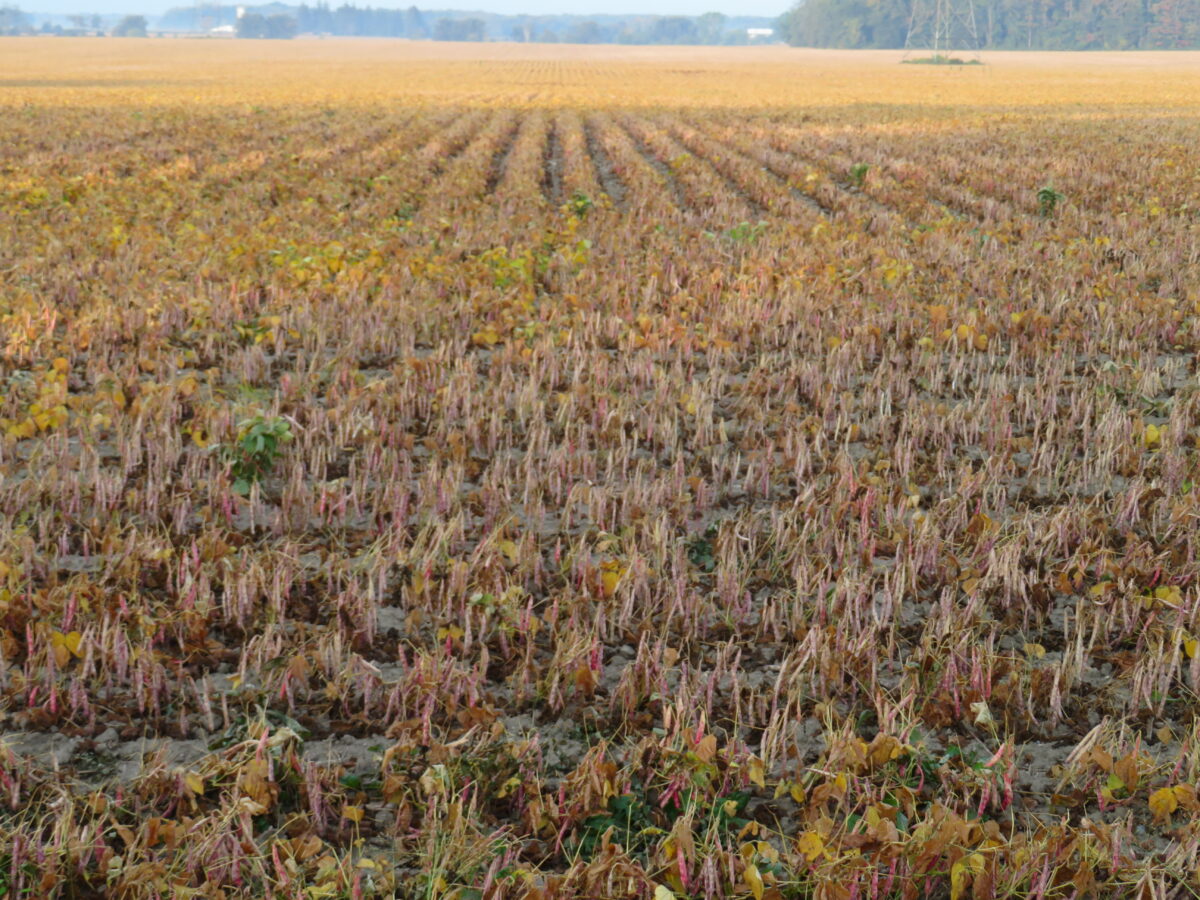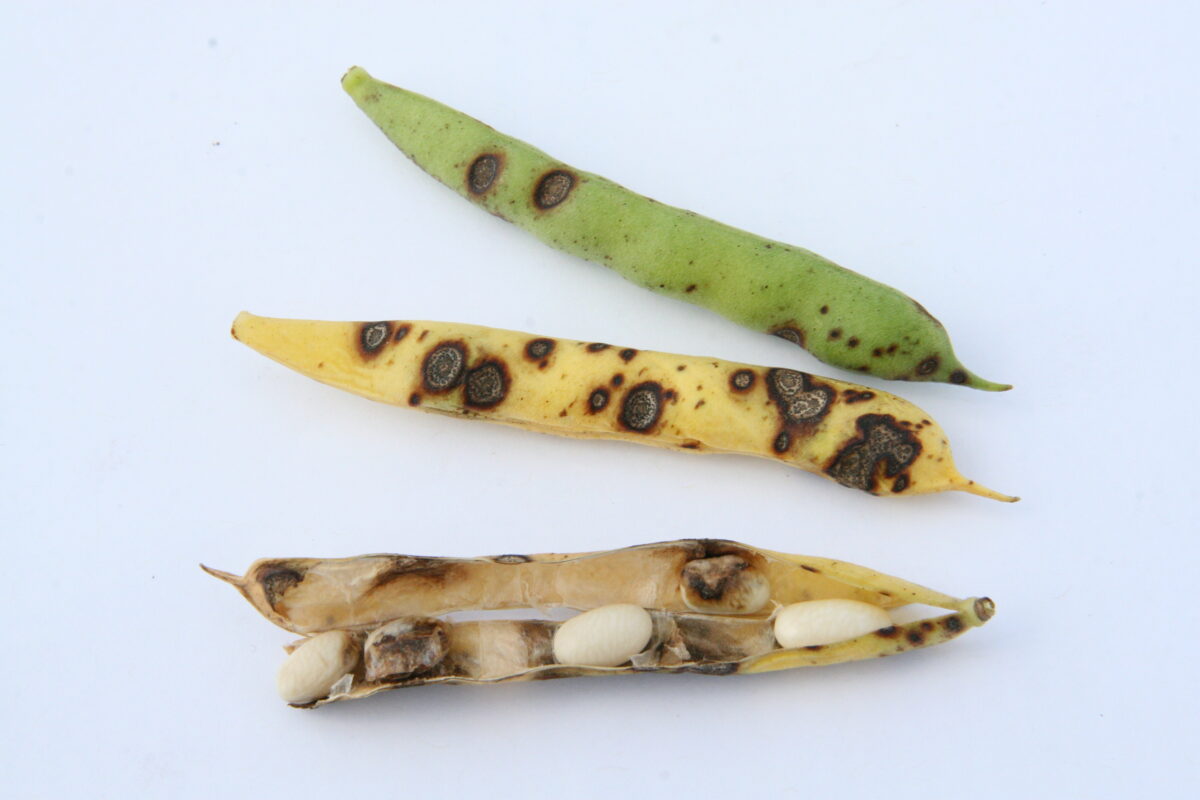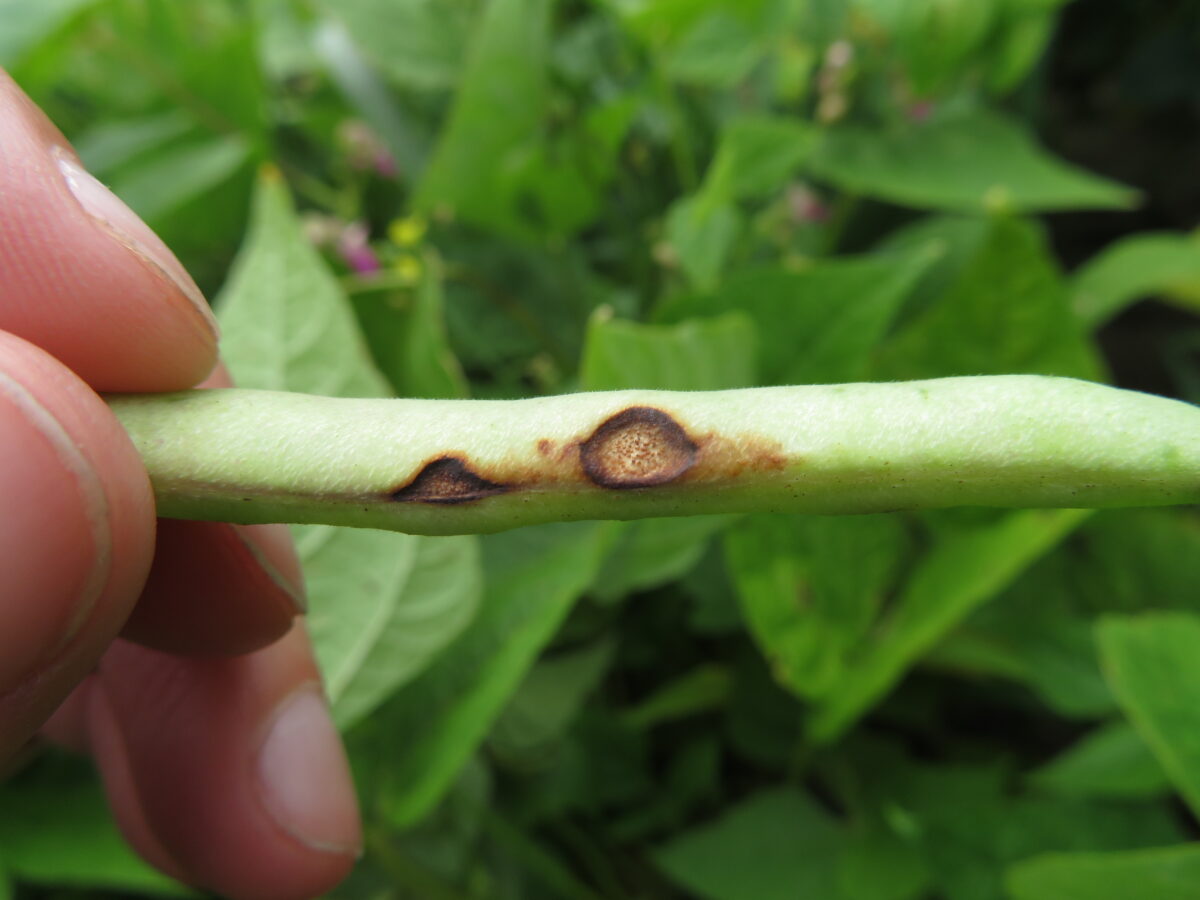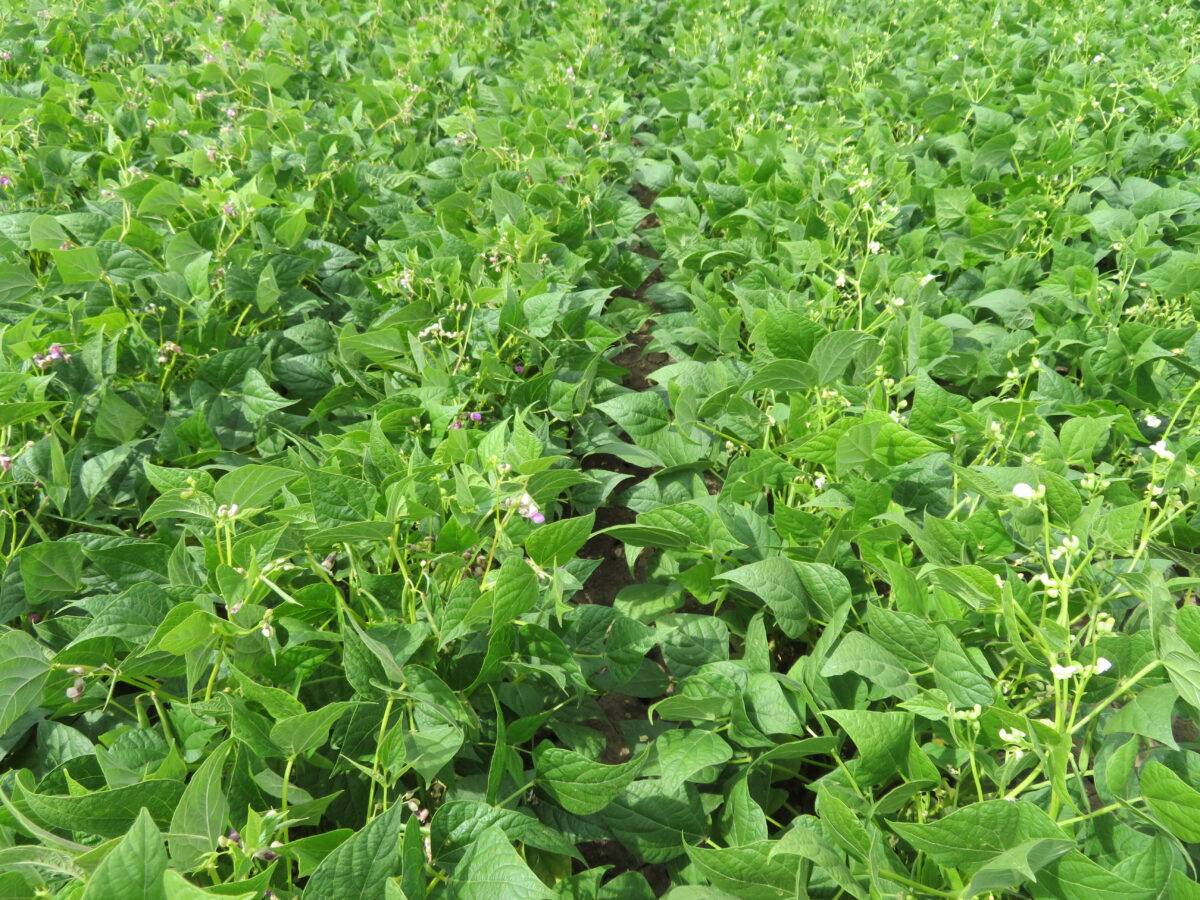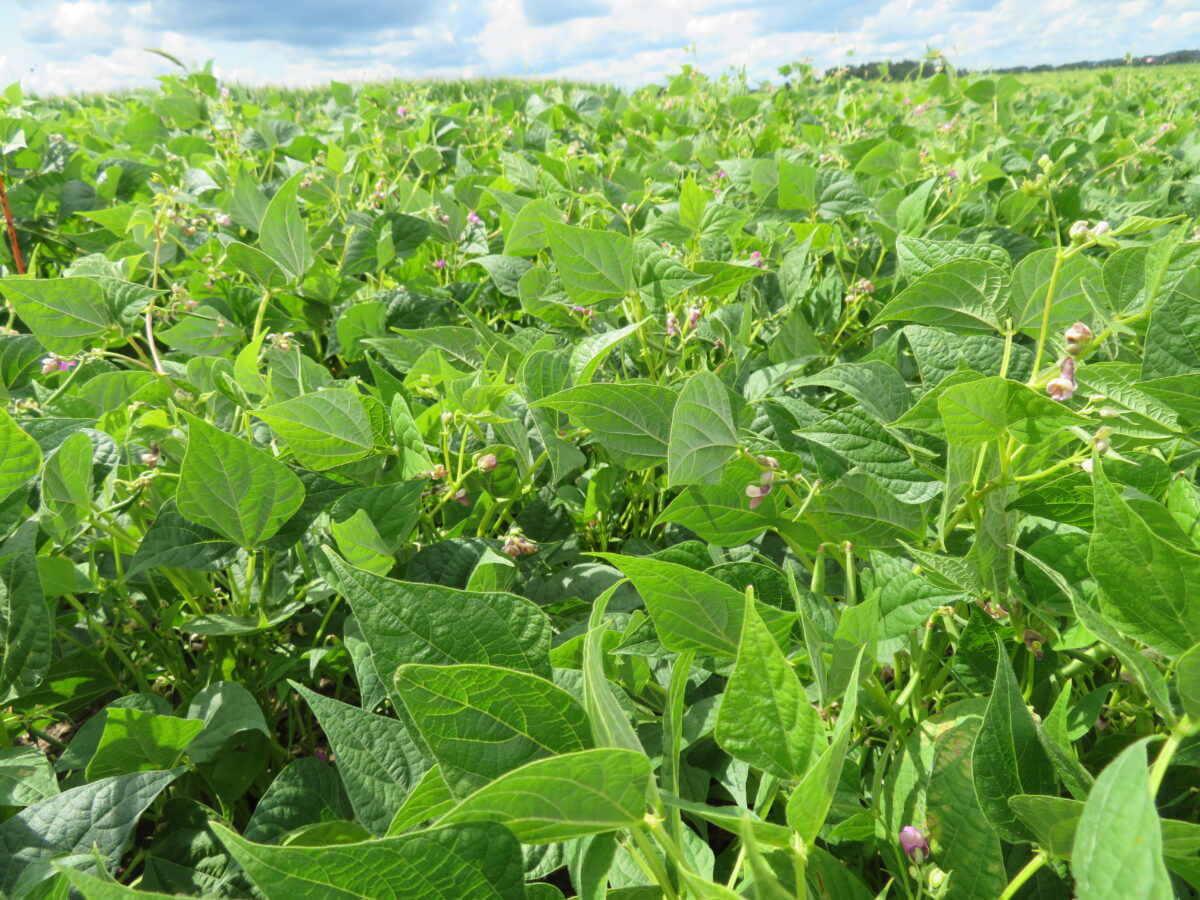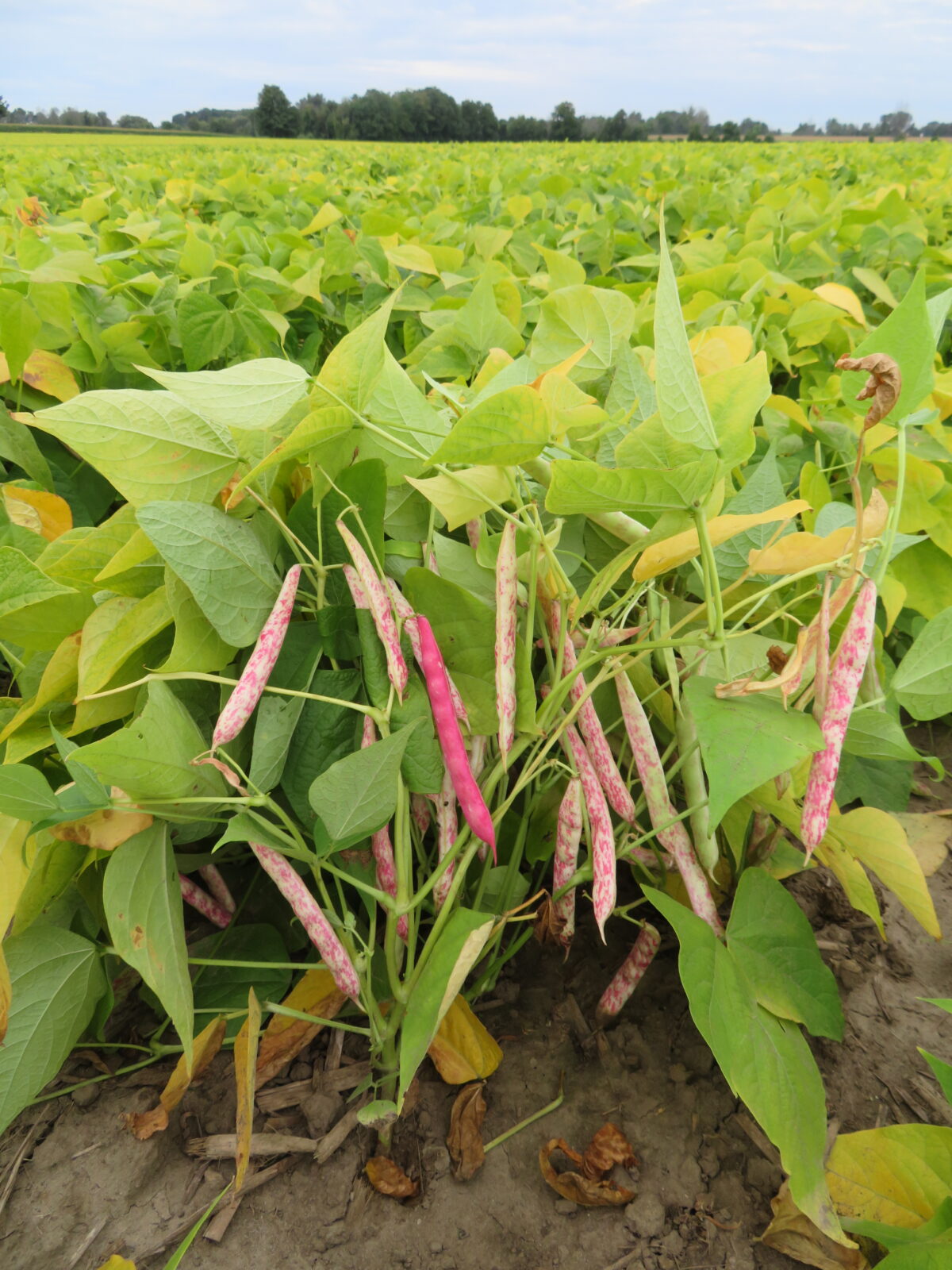Residues from Aim, Valtera and Eragon were not detectable. Glyphosate resides were above the MRL in cranberry beans.Continue readingComparing harvest aids for beans, 2010-2012: Herbicide residues
Crop yield losses as high as 32% were measured as the timing of the herbicide Eragon decreased towards the 0% pod maturity timing.Continue readingComparing harvest aids for beans, 2010-2012: Desiccation timing
For the combination fungicide timings, A+C gave the best results under low disease pressure, while B+C had the lowest pod infection and seed pick, and the highest yield under higher disease pressure.Continue readingThe timing of strobilurin fungicides to control anthracnose in 2005-2006
Burial of residue using tillage, along with milder and wetter weather encourages the break down of crop residue, and this kills anthracnose on the residue.Continue readingAnthracnose survival on dry bean plant residue 2016
Common bacterial blight (CBB) is a serious seed-borne disease of bean, affecting leaves, stems, pods and seed. Management includes disease free seed production and genetic resistance. The purpose of this study was to measure the effect of CBB resistant navy cultivars, under moderate/high disease pressure. Two resistant and four susceptible cultivars were tested at six…Continue readingImpact of common bacterial blight resistance in dry bean cultivars 2003-2004
Simulated hail damage reduced yield by 29%. Applying Quadris or Headline did not visibly reduce plant stress and did not result in a yield response to any cultivar or market class.Continue readingStrobilurin Fungicides for Plant Health in Dry Beans, 2009-2011
There were no differences in yield, even when the fulvic acid fertilizer was tested at 8x of the label rate. There were no differences in yield between cultivars, market classes, sites or years.Continue readingFulvic and Humic Acid Fertilizers in Dry Bean, 2010-2011
Anthracnose is a seed borne disease that reduces yield and seed quality. Seed treatments provide the first chemical defence for this disease. DCT (diazinon + captan + thiophanate-methyl) was the standard seed treatment in Ontario. Earlier work found that DCT was better than Apron Maxx (fludioxonil + metalaxyl-m) in managing early season anthracnose infection on…Continue readingImproved seed treatment for anthracnose in dry beans, 2007-2008
The purpose of this study was to find the best fungicide timing, in combination with a seed treatment, to manage anthracnose in a bean crop in Ontario and Manitoba.Continue readingAnthracnose control in bean with seed treatment and fungicide, 2005-2006
The response of navy and pinto beans to narrow row production have been tested since indeterminate upright cultivars were developed in the 1980’s. Ablett (1988) found a 28% yield increase in narrow rows with high populations, but only if the plots were mechanically harvested. Six unpublished Ontario studies between 1980-1987 found an average narrow row…Continue readingNarrow Row Cranberry and Kidney Bean Production, 2006-2007
